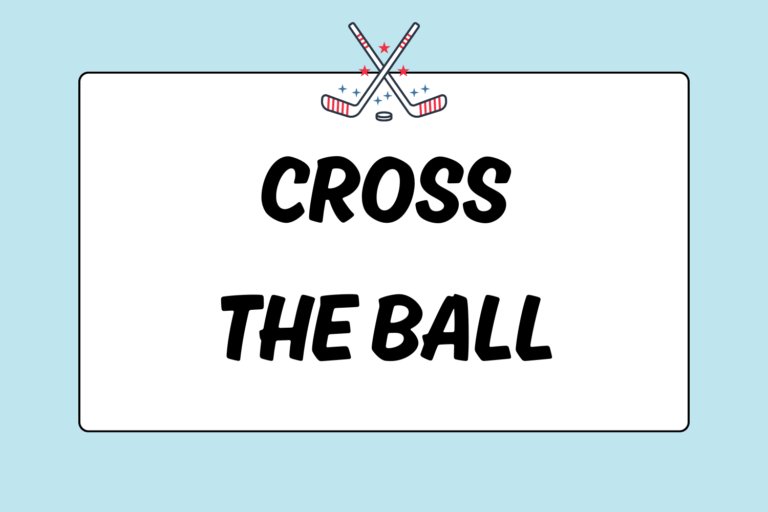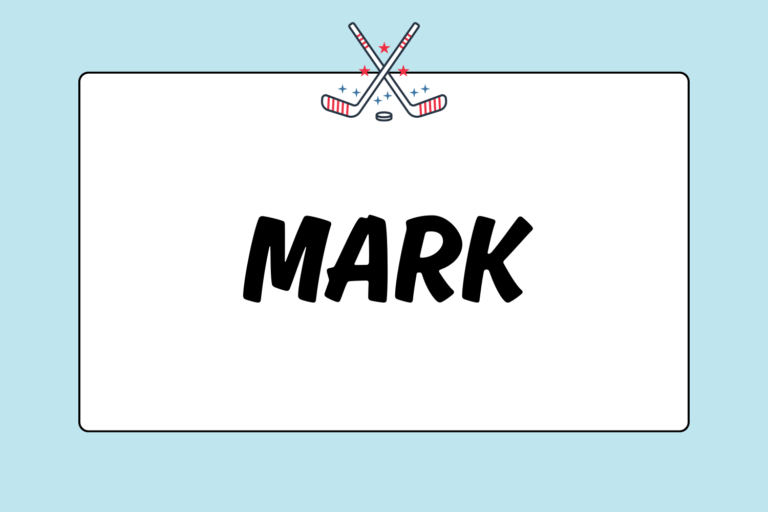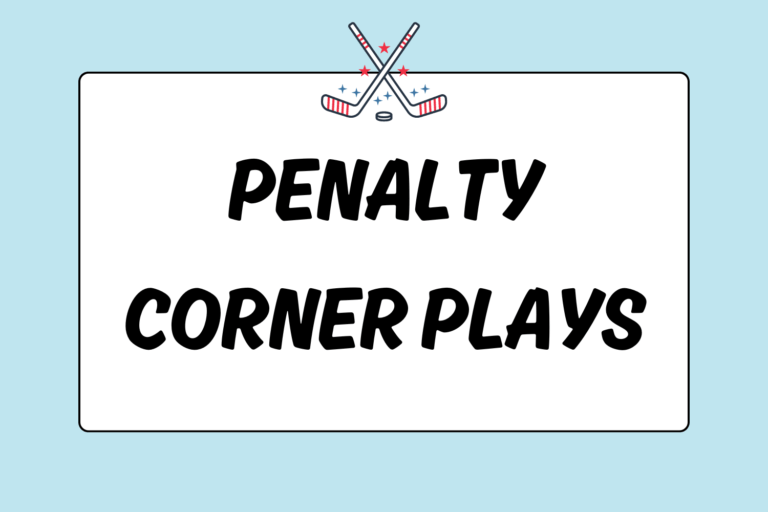A field hockey goal measures seven feet tall and 12 feet wide. A field hockey ball measures about three inches in diameter. So, perhaps you’re wondering how a goalie, only five feet tall, can defend a goal that’s double her size from such a tiny object. The answer is positioning.
This guide will cover basic positioning for goalkeeping. Learn how to position yourself correctly and you will be able to defend every inch of the goal.
Stay Square
The first step to positioning is to square up to the ball. This means that both of your hips and shoulders should be facing the ball at all times. To get a better understanding of this, hold your hand out flat in front of you. Face your palm towards you and look straight at it. Now, tilt your hand to the side. Did your hand look larger when you were looking at it straight-on or when it was tilted? It should have looked bigger when you were looking at it straight-on. That is what you want to do with your body when you’re in goal: Make it look as big as possible to the shooter. Remember, make sure to always face the ball — not the player. Adjusting yourself to the player will ruin your angles.
Play the Angles
Always be aware of your position in relation to the goal and the ball. To position yourself between the two, you need to start thinking in terms of angles.
Within the shooting angle, make sure you cover the near post (also called the “front post,” it’s the post closest to the ball). By cutting off the shot to the near post, you’ll force your opponent to shoot to the far post to reach the goal. Since she’ll have to shoot farther, your team will have more time and distance to stop the ball before it reaches the back post.
Listed below are a few examples of where to stand within the shooting angle for different points of attack:
- For shots from the right or left side of the goal: The front post is your main priority for these angles. Guard the front post by standing either next to the post or close enough to touch it (depending on where the ball is and the angle that you’re covering). The back post will be covered by one of your defenders.
- For shots from the top of the circle: Start in the middle of the goal. Move forward or backwards depending on the position of the shooter (discussed in the next section).
- For shots from various angles: Adjust yourself to the shots from various angles by positioning yourself inside the angle (between the ball and the goal). Move forward or backwards to reduce the shooting angle. Make sure to always cover the goal post closest to the ball.
Hot Tip: Get a Visual
A good way to understand correct positioning is to mentally draw a line from each goal post to the ball. The lines connect to form an angle. You want to place yourself within the angle and block off as much of it as possible. So, always stand on the inside of the two lines and move from side-to-side to block any shots.
Coming Out of the Goal
Once you’ve positioned yourself inside the shooting angle, you can now move forward and backward (depending on the ball’s position) to give yourself the advantage. When you move forward, you reduce the shooting angle. When you move along the goal line, you allow for easier maneuverability and more range.
To get a better understanding of this concept, hold your hand in front of you and place it near your computer monitor. Now bring your hand slowly towards your face. As it comes close to your eyes, notice how, in relation to the monitor, your hand appears larger and covers up more of the screen. In this example, the monitor is the goal, and your hand is you, the goalie. So, as you come out of the goal you block more of it. Get it?
Advantages
The advantage of coming out of the goal is that you force the shooter to hit around your body, thus decreasing the shooter’s angle and forcing her to hit wide. The advantage of staying on the goal line is that you can easily maneuver across the goal to adjust to where the ball is being played. Listed below are examples of when to come out of the goal and when to stay on the goal line:
- Come off the goal line when:
- The ball is outside of the shooting circle.
- A player takes a direct shot on goal from the top of the circle (common during penalty corners).
- An opponent takes a shot inside of the shooting circle.
- You face a one-on-one situation with an opponent trying to take a shot.
- Stay on the goal line when:
- The ball is being played near the front of the goal.
- The ball is being passed back-and-forth across the goal between opposing players.
- The ball is being played near the end line. In this situation, cover the front post.
- The point of attack keeps shifting.
Movement
Shuffle your feet side-to-side to move across the goal. Do not turn your body sideways or away from the goal to move across it. Always face the ball in case someone takes a quick shot on goal. To shuffle:
- Stay low by bending your knees and step sideways with your right foot.
- Bring your left foot to meet your right foot, but do not cross your feet.
- Repeat or switch directions.
By making small, quick movements with your feet, you decrease the chance of shots going through your legs. Also, if you stand on the balls of your feet, you’ll have easier maneuverability and it will be much easier to pivot back-and-forth between the posts.
Spectacular Saves
Everyone loves watching a spectacular save by a goalie. But, what most people don’t realize is that the beauty of the save is likely the result of goalie making up for being in the wrong position!
Playing safe is not a bad thing for a goalie. By properly positioning yourself, you will be able to stop every ball with ease. So, work on playing your angles and cutting off the shot so you can make safe, boring saves. You’ll get shutouts every game!





